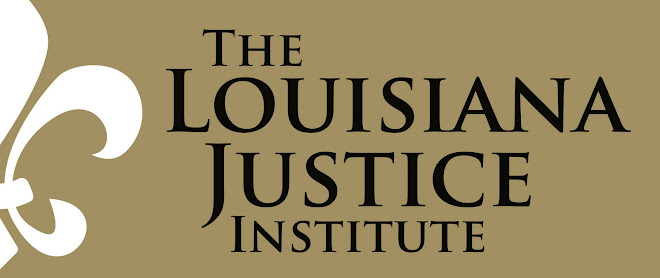 As we enter the final days before New Orleans' historic municipal elections, Louisiana Justice Institute presents excerpts from Race, Representation, and Recovery: Documenting the 2006 New Orleans Mayoral Elections, by Katherine Cecil. We believe her analysis of the 2006 elections forms an important basis for understanding the current election.
As we enter the final days before New Orleans' historic municipal elections, Louisiana Justice Institute presents excerpts from Race, Representation, and Recovery: Documenting the 2006 New Orleans Mayoral Elections, by Katherine Cecil. We believe her analysis of the 2006 elections forms an important basis for understanding the current election.Dubbed “Ray Reagan” for his conservative views and largely unpopular with the majority of black voters prior to Katrina, Nagin campaign strategists believed that African-Americans would vote for him, especially within the uncertain post-Katrina political climate. During this time it is possible to observe a significant shift in Nagin’s electoral rhetoric as well as his stance on policies that had begun to be interpreted by the black and white communities along racial lines. The most publicized shift was Nagin’s “Chocolate City” speech, given on Martin Luther King Day, in which Nagin attempted to reach out to African-American displaced citizens by calling for New Orleans to remain a majority-black town.
Audubon Nature Institute Chief Executive Ron Forman came to replace Ray Nagin as the conservatives’ candidate of choice shortly after the unveiling of the Bring New Orleans Back Commission plan and before the 2006 mayoral election period began. Forman was another Republican turned Democrat but also white and from Uptown. Alluding to the old-line and almost exclusively white carnival krewes drawing members from this area of the city, white Tulane political scientist Dr. Thomas Langston noted a correlation between the “flags of Mardi Gras royalty” alongside the “Vote for Ron Forman” signs.
Like Nagin, Forman had not previously held political office, which his supporters saw as a strength. He had exhibited business and organizational skills in the private sector that they wished to see applied to the running of city government, and significantly, with the racial demographic shifts post-hurricane, his campaign managers disregarded the prior necessity of coalition building that had been essential to ensure victory within recent history. Also like Nagin, through his social and business connections, Forman had ties to the white economic powerbrokers within the business community, and he was to promote a platform that highlighted economic development over equity and downplayed social justice issues.
Lieutenant Governor Mitch Landrieu, a more progressive Democrat and son of the last white mayor, was the incumbent’s main viable opponent, and he emerged to Nagin’s political left. Appearing more capable of garnering significant support from the center, Landrieu entered into the race as the candidate with stronger Democratic credentials than either Forman or Nagin, which was an advantage in a hitherto distinctly Democratic city.
But as New Orleans looked whiter in 2006 than it had since Moon had been in office, it became a prevailing undercurrent to this mayoral election that City Hall could “go white” for the first time since Moon Landrieu had left office nearly thirty years earlier. It was speculated that without the pre-storm African-American population levels, the city might have lost its majority black population of all socio-economic groups for the foreseeable future, and that a racial group that had not produced a winning mayoral candidate for many decades might now have an occasion to do so.
Indeed, the large number of white candidates entering into the field seemed to have the joint effect of simultaneously confirming black candidates’ reservations about white voter support in the absence of a black majority, while also testing this racial voting balance of coalition-building that had guided New Orleans politics since the federal safeguards of the modern Civil Rights era had begun to take effect. Furthermore, the dearth of viable black candidates as alternative challengers to the incumbent’s re-election bid compounded an emerging fear amongst African-American communities of losing political representation.
(You can read the complete essay online here.)
Born in the UK, and living in New Orleans since 2001, Katherine Cecil began her film career as a researcher and field producer. She formed her small company CecilFilm Productions shortly after Hurricane Katrina, and is currently working as a co-producer on a documentary looking into recent changes to the New Orleans public school system.

No comments:
Post a Comment